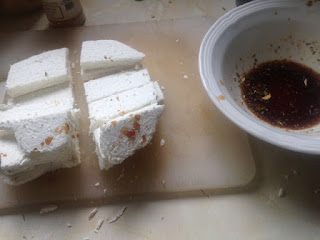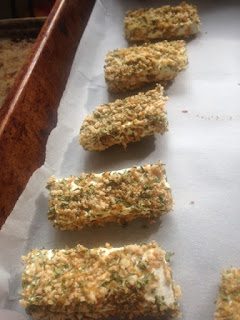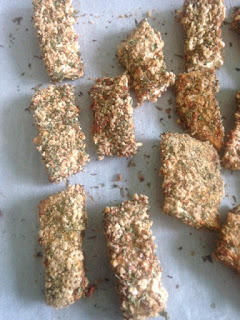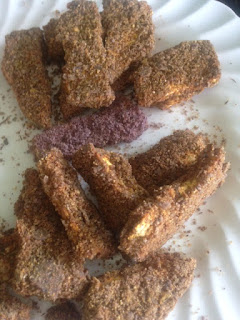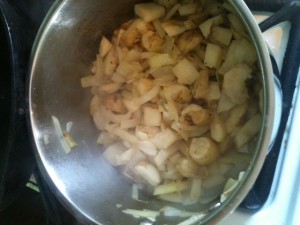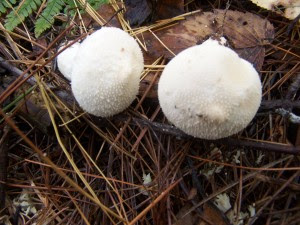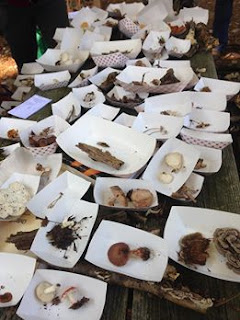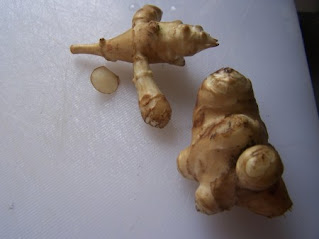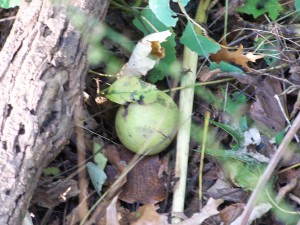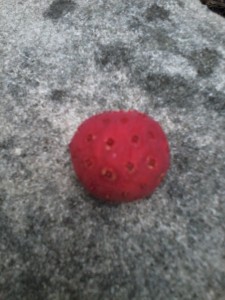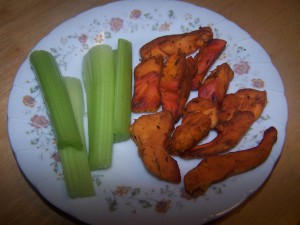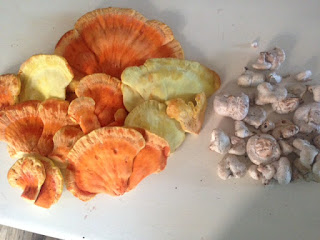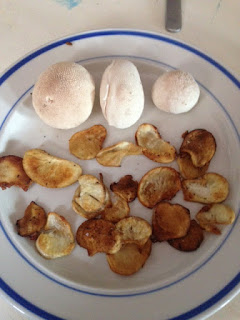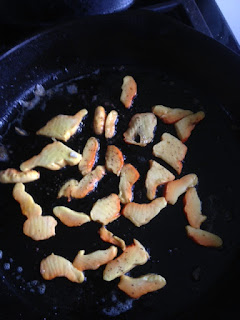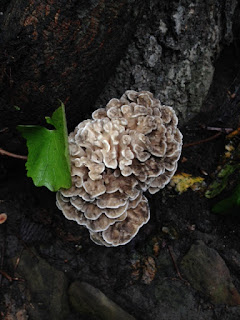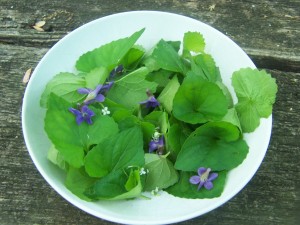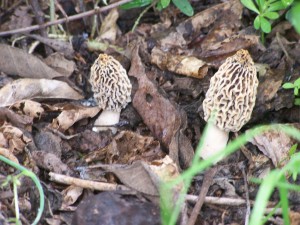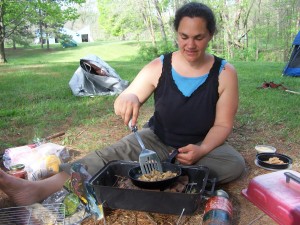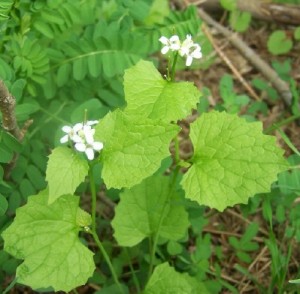The Hunt for Wild Mushrooms
by Melissa Sokulski
 |
| Morels, early spring |
Mushrooms are an interesting entity: neither plant nor animal, fungi are their own kingdom and upon close examination actually have more in common with animals than plants. Their cell walls contain chitin, found in shells of crabs and exoskeletons of insects but absent from plants. Plants make their own food but like animals fungi digest their food with enzymes they produce. Fungi also take in oxygen and release carbon dioxide like animals, while plants do just the reverse.
Nevertheless, as a vegetarian I am comfortable eating mushrooms and wild mushrooms are a true culinary delight - a feast for the forager - if you know what you are looking for.
When my husband and I first decided to learn about wild mushrooms, we were extremely fortunate to stumble upon the amazing and generous
Western Pennsylvania Mushroom Club. We decided to go on one of their free weekly walks, open to members and guests. They meet at parks all over Allegheny County and beyond, there are now chapters of the club in Indiana county and Washington/Greene counties. Usually led by club mycologists and attended by experts as well as amateurs, this is a great way to learn about the fungus among us (I just had to!)
 |
| Chicken Mushroom |
On our way to Deer Lake to meet the club one Saturday in August, my husband Dave and I promised each other that no matter what they said we would not eat any wild mushrooms. Wild mushrooms are dangerous, I proclaimed, mimicking the warnings of my herbal mentor who told me, “Native Americans didn't even eat wild mushrooms,” (untrue) and “The number one cause of death among mycologists is mushroom poisoning!” (also not true.) But apparently a promise made is a promise broken in our household because before long we were filling our basket with golden yolk-colored chanterelles, a prized culinary mushroom.
 |
A member of the Western PA Mushroom
Group with his basket of chanterelles. |
One mushroom expert pointed out the false gills of the mushroom, and further explained that chanterelles grow singly from the ground unlike the poisonous (but rarely deadly) Jack O'Lantern, a common look-alike which often grows in clusters on wood. “But sometimes the wood is buried,” he warned, “like an underground root, so you have to be careful.” Another distinction is that Jack O'Lanterns are bio-luminescent, they glow in the dark. I was beginning to learn that edible or not, mushrooms are endlessly beautiful and fascinating.
We got the mushrooms home and prepared them, slicing them and noticing the apricot smell. We sauteed them (most edible wild mushrooms need to be cooked or can make you sick) and were hooked.
Filling out the application to join the club, one question asked, “How many wild mushrooms can you confidently identify?” I confidently filled in the blank with a zero. The thought of being able to identify wild mushrooms daunted me. Now I can identify over thirty, from delicious morels to the deadly Destroying Angel, both of which do indeed grow in this area.
 |
| Giant Puffballs |
The late summer into the fall is a great time to learn about wild mushrooms. There are a lot of beginner-friendly edible mushrooms to identify all throughout the city parks including the chicken mushroom or sulfur shelf (one of my favorites), chanterelles, giant puffball, black trumpets, lions mane or bear tooth, and the hen of the woods. The best way to learn to identify these mushrooms is by walking with experts like those in the mushroom club and attending their monthly meetings at
Beechwood Farm Nature Reserve, which are also free and open to guests. Their annual foray is in September. There are walks and talks by experts, as well as a mushroom feast: dozens of dishes made with wild mushrooms by members of the mushroom club.
You can also find identification information and wild mushroom recipes on our website, Food Under Foot. Adding mushrooms to your foraging basket is as fun as it is delicious, and can be safe with care and knowledge. As I've heard many times from many people in the mushroom club, “There are old mushroom hunters and there are bold mushroom hunters, but there are no old bold mushroom hunters.”
This article and all pictures copyright Melissa Sokulski




